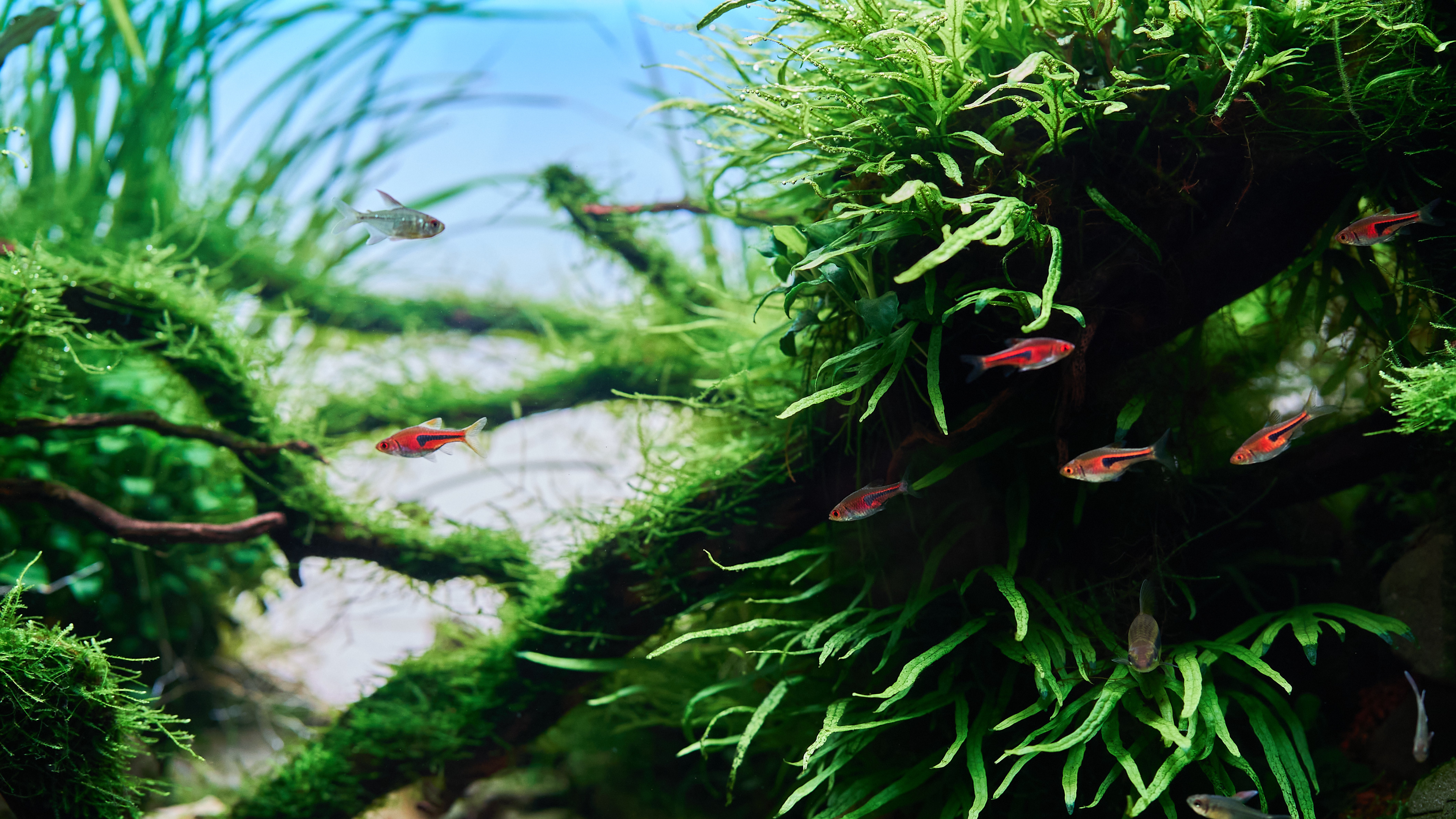Creating a freshwater planted aquascape can be a fulfilling and visually stunning hobby. This guide will walk you through the process of setting up your first planted aquarium, from choosing the right equipment to maintaining your aquatic plants.
1. Planning and Preparation
Research and Design
Before starting, invest time in researching different aquascaping styles such as Dutch, Iwagumi, and Jungle. Decide on a design that appeals to you and plan the layout, taking into account the types of plants and fish you want to keep.
Budget
Planted aquariums can vary in cost depending on the equipment and plants you choose. Plan your budget to include the cost of the tank, lighting, filtration, substrate, plants, and any additional equipment.
2. Equipment Needed
Aquarium Tank
Choose an appropriate tank size for your space and the plants you wish to grow. Larger tanks (20 gallons or more) offer more stability and room for aquascaping.
Lighting
Good lighting is crucial for plant growth. LED lights are energy-efficient and provide the necessary spectrum for photosynthesis. Ensure the light intensity and duration are suitable for the plants you plan to keep.
Filtration System
A reliable filtration system is essential to maintain water quality. Canister filters or hang-on-back filters are commonly used. Choose a filter that provides adequate flow without disrupting the aquascape.
CO2 Injection
Many aquatic plants thrive with additional CO2. A CO2 injection system can enhance plant growth and overall health. For beginners, a simple CO2 kit can be sufficient.
Substrate
Use a nutrient-rich substrate designed for planted tanks, such as aqua soil or enriched gravel. These substrates provide essential nutrients for root development and plant growth.
Heating
Maintain a stable water temperature (usually between 72-78°F) with an aquarium heater. Choose a heater appropriate for the size of your tank.
3. Setting Up the Aquarium
Placement
Place your tank on a sturdy stand, away from direct sunlight to prevent algae growth. Ensure easy access to power outlets for your equipment.
Adding Substrate
Add a layer of nutrient-rich substrate, followed by a cap of inert gravel or sand if desired. This helps anchor plants and prevent nutrient leaching.
Hardscape
Arrange rocks, driftwood, and other decorative elements to create the desired layout. Consider the placement of plants and create hiding spots and open areas for fish.
Planting
Start by planting foreground plants, followed by midground and background plants. Use aquascaping tweezers for precise placement and to avoid damaging delicate roots.
4. Cycling the Tank
Cycling establishes beneficial bacteria that process waste. Add a source of ammonia (like fish food or liquid ammonia) and monitor water parameters. The cycle can take several weeks; wait until ammonia and nitrite levels are zero before adding fish.
5. Adding Fish and Invertebrates
Stocking Plan
Choose fish and invertebrates that are compatible with your plants and each other. Avoid overcrowding and select species that complement your aquascape.
Acclimation
Acclimate new fish and invertebrates slowly to prevent shock. Use the drip acclimation method: gradually introduce tank water to the bag over an hour before transferring the livestock.
6. Maintenance
Water Testing
Regularly test water parameters (ammonia, nitrite, nitrate, pH, and CO2 levels) and keep a log. Stable water conditions are crucial for plant and fish health.
Water Changes
Perform regular water changes (20-30% weekly) to maintain water quality and replenish nutrients. Use dechlorinated water of the same temperature as your tank.
Trimming and Pruning
Regularly trim and prune plants to encourage healthy growth and maintain the desired aquascape. Remove any dead or decaying leaves promptly.
Fertilization
Supplement plant nutrients with liquid fertilizers or root tabs, following the recommended dosing schedule for your specific plants.
7. Tips and Advice
- Be Patient: Aquascaping is a gradual process. Allow time for plants to establish and grow.
- Monitor Algae: Keep an eye on algae growth and address any issues promptly with appropriate measures like adjusting lighting, increasing CO2, or adding algae-eating species.
- Observe Regularly: Spend time observing your tank daily to catch any issues early and enjoy the beauty of your aquascape.
- Join a Community: Engage with online forums or local clubs for support, advice, and inspiration.
Conclusion
Setting up a freshwater planted aquascape system requires careful planning and maintenance, but the rewards are worth the effort. With the right equipment, plants, and care, you can create a thriving and beautiful underwater garden. Enjoy the process and the tranquility that a well-maintained aquascape brings to your home.

